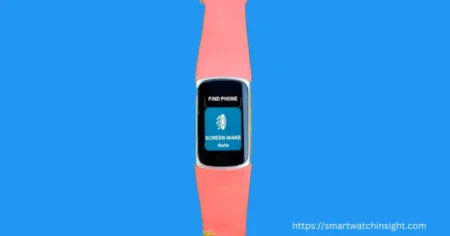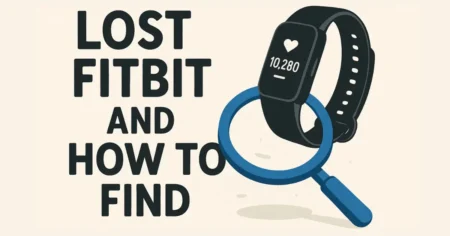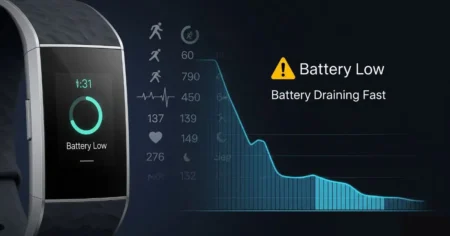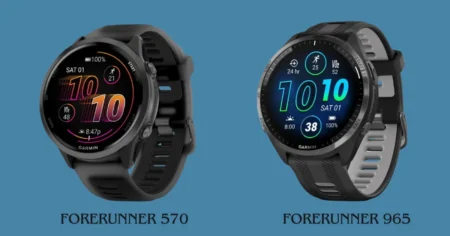The Fitbit Charge HR is a well-known fitness tracker praised for its sleek design and precise tracking features. However, the waterproof capabilities of this device have raised some questions among fitness enthusiasts.
In this article, we will reveal the Truth Is Fitbit Charge HR waterproof? and Learn the truth about the water resistance of this popular fitness tracker and how to keep it safe from water damage.
Understanding Waterproof vs Water Resistance
Waterproof and water-resistant are terms commonly used to describe a product’s ability to endure water exposure. Although they sound similar, they have distinct differences:
Waterproof: A product labeled waterproof is crafted to prevent water penetration, even when fully submerged. Through rigorous testing and adherence to specific standards, waterproof devices such as the Fitbit Charge HR are designed to resist water in various conditions.
Fitbit Charge HR, a waterproof fitness tracker, and heart rate monitor, is an excellent example. It excels in activities like swimming, snorkeling, and diving, enduring prolonged water exposure without damage.
Water-Resistant: Conversely, water-resistant products provide a certain level of water protection but are not entirely impervious. They can handle light splashes, rain, or brief encounters with water.
However, submersion or extended exposure to heavy water is beyond their capabilities. Devices labeled as water-resistant, including fitness bands and activity trackers, often possess an IP rating that signifies their level of water resistance.
The primary distinction between waterproof and water-resistant lies in the degree of protection they offer against water. Waterproof devices, like the Fitbit Charge HR, provide a higher level of defense, making them suitable for demanding water activities.
Water-resistant devices, while able to withstand lighter water encounters, have limitations regarding prolonged submersion.
It’s crucial to remember that a product’s specific capabilities depend on its design, construction, and compliance with industry standards.
Always consult the manufacturer’s specifications and guidelines to accurately assess a product’s water resistance or waterproof features.
This ensures you choose the right fitness tracker, like Fitbit Charge HR, to meet your water-related fitness goals with its reliable heart rate accuracy and excellent waterproof performance during swim workouts.
Is Fitbit Charge HR Waterproof?
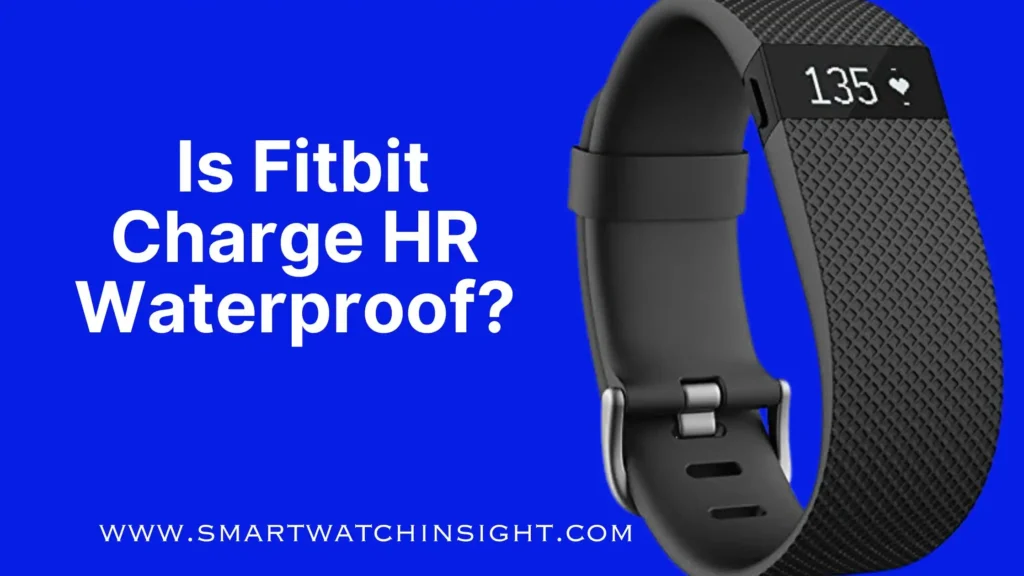
When it comes to the Fitbit Charge HR, many users wonder whether it can withstand water exposure. Let’s delve into this topic to find out more.
That’s correct. The Fitbit Charge HR is Not Waterproof it is water-resistant to a depth of 10 meters or 1 ATM, providing a level of protection against water. This means it can handle the occasional splash without any issues.
However, it’s important to note that water resistance is not the same as being completely waterproof. While it can survive some exposure, it should not be submerged in water for an extended period of time.
If you are considering wearing your Fitbit Charge HR while engaging in water-based activities such as swimming or showering, there are some precautions to consider.
If you do swim or shower with your Fitbit Charge HR, there is a risk that it could be damaged. Water resistance can diminish over time due to wear and tear, and exposure to water can increase this process. Additionally, factors such as water pressure and temperature changes can affect the device’s performance.
To keep your Fitbit Charge HR in optimal condition, it’s best to remove it before swimming or showering. If you accidentally expose it to water, it’s advisable to dry it thoroughly using a soft cloth to prevent any potential damage.
While the Fitbit Charge HR offers water resistance, it’s important to exercise caution to ensure its longevity. Taking preventive measures and avoiding unnecessary water exposure can help preserve its functionality and extend its lifespan.
You may also like >> How to Restart Fitbit Versa 3:[3 Easy Steps]
Precautions for Wet Fitbit Charge HR
Should your Fitbit Charge HR come into contact with water, it is crucial to take immediate action. Firstly, power off the device to minimize the risk of internal damage caused by moisture.
Gently drying the tracker with a soft cloth is the next step. Harsh chemicals or cleaning solutions should be avoided as they can be detrimental to the device’s functionality.
Once your Fitbit Charge HR is thoroughly dry, you can power it back on and continue using it.
Protective Measures Against Water Damage
To ensure the longevity of your Fitbit Charge HR and protect it from potential water damage, consider implementing these preventive measures:
- Refrain from swimming while wearing the device.
- Avoid prolonged submersion of the tracker in water.
- Thoroughly dry the device if it gets wet.
- Do not use abrasive chemicals or cleaning solutions on the tracker.
- Store your Fitbit Charge HR in a cool and dry environment.
Water Resistance Ratings for Smartwatch
| PX0No water resistance. The smartwatch is not protected against water. | |
| IPX1 | Protection against vertically falling water drops. Can withstand light splashes. |
| IPX2 | Protection against water drops falling at an angle of up to 15 degrees. Can withstand light splashes and light rain. |
| IPX3 | Protection against water sprays up to 60 degrees from vertical. Suitable for activities involving water splashes, rain, or light showers. |
| IPX4 | Protection against water splashes from any direction. Suitable for activities involving water splashes, rain, or light showers. |
| IPX5 | Protection against water jets at low pressure. Can withstand water projected from a nozzle with a 6.3mm diameter opening. Suitable for activities such as washing hands or light water exposure. |
| IPX6 | Protection against water jets at high pressure. Can withstand water projected from a nozzle with a 12.5mm diameter opening. Suitable for activities such as heavy rain or water exposure during sports activities. |
| IPX7 | Can be submerged in water up to 1 meter for up to 30 minutes. Suitable for swimming and water sports, but not recommended for deep diving. |
| IPX8 | Can be submerged in water beyond 1 meter. The exact depth and duration should be specified by the manufacturer. Suitable for snorkeling, diving, or other water-intensive activities. |
| ATM3 | Water-resistant up to 30 meters. Suitable for everyday wear, including handwashing and light splashes. Not suitable for swimming or water-related activities. |
| ATM5 | Water-resistant up to 50 meters. Suitable for swimming, showering, or other activities involving water splashes. Not suitable for diving or snorkeling. |
| ATM10 | Water-resistant up to 100 meters. Suitable for recreational swimming, snorkeling, and other water activities. Not suitable for deep diving. |
| ATM20 | Water-resistant up to 200 meters. Suitable for professional marine activities, including scuba diving, but not suitable for saturation diving or extreme depths. |
Conclusion
The Fitbit Charge HR stands as a water-resistant fitness tracker; however, it is not fully waterproof. Swimming or extended submersion in water is not recommended.
By adhering to the tips provided in this blog post, you can safeguard your Fitbit Charge HR from water damage, ensuring its longevity and functionality as you work towards your fitness goals.
- How to Factory Reset Fitbit Inspire 2
- How to Change Time on Fitbit without App
- What is DND Mode on Fitbit?
- How to Charge Fitbit Without Charger?
FAQS:-Is Fitbit Charge HR Waterproof?
Q1. Can I Swim or shower with my Fitbit Device?
Fitbit devices are generally water-resistant, but the level of water resistance can vary depending on the model. Fitbit provides water resistance ratings for their devices, which indicate the extent to which they can withstand water exposure. It’s important to check the water resistance rating of your specific Fitbit model to determine if it is suitable for swimming or showering.
Q2. How Waterproof is the Fitbit Charge HR?
Fitbit devices are generally water-resistant, but the level of water resistance can vary depending on the model. Fitbit provides water resistance ratings for their devices, which indicate the extent to which they can withstand water exposure. It’s important to check the water resistance rating of your specific Fitbit model to determine if it is suitable for swimming or showering.
Fitbit devices with a water resistance rating of 5 ATM (atmospheres) are generally considered suitable for swimming and showering.
These devices can withstand water pressure equivalent to being submerged in up to 50 meters of water. They are designed to handle activities involving shallow water, such as swimming laps in a pool or taking a shower.
However, it’s important to note that excessive exposure to water, such as in hot tubs or saunas, may still damage the device despite its water resistance rating.
Q3. What does water-resistant 50M mean?
A water resistance rating of 50 meters means the device is suitable for wearing around sinks, during swimming, and in shallow waters, but not for snorkeling or scuba diving.
A water resistance rating of 100 meters means the device can be worn around sinks, during swimming, and for poolside diving and snorkeling, but not for jet-skiing or scuba diving.
Q4. Are Fitbit chargers waterproof?
Fitbit chargers are not fully waterproof; instead, they are water-resistant up to 50 meters deep. This means they can withstand minor exposure to water, such as accidental splashes or being used in a rainy environment. However, they are not designed to be submerged in water or used during swimming or other water-related activities. It’s essential to protect the Fitbit charger from extended water exposure to ensure its proper functionality and longevity.
Q5. Is it OK to swim with a Fitbit?
Yes, it is generally okay to swim with certain Fitbit devices that have a suitable water resistance rating. Fitbit models with a water resistance rating of 5 ATM (atmospheres) or higher are designed to be worn while swimming. These devices can withstand water pressure equivalent to being submerged in up to 50 meters of water.

